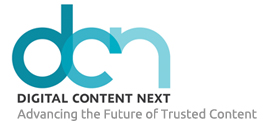Search results for "reader revenue"

Shakespeare, meet Einstein—Making the leap from data insights to artificial intelligence for content marketing
There isn’t a company leader out there today who doesn’t realize that their ability to harness and interpret data will make or break their business. When it comes to data analytics, the bar is constantly being raised. Leveraging data to become more AI-driven is (or should be) on every CEO’s mind.

A Chinese news app is quietly referring millions of pageviews—here’s how global publishers can take advantage
Traffic to content can come from unexpected places. Case in point: Chartbeat’s data science team recently found that TopBuzz — a China-based news aggregation app — was responsible for a multi-million spike in pageviews among our publishers late last year.

How integrating analytical and editorial teams drives subscriptions
As the digital media market continues to feel pressure from the duopoly, publishers are putting more effort into direct relationships with their audiences and leveraging actionable intelligence from data. Today, this means much more than ad targeting. Data allows publishers to better serve their readers and, as a result, better profit from true engagement.

How The New York Times’ free student subscriptions strategy will pay off
It does not come as a surprise that most digital publishers look to the New York Times for subscription strategy advice: On February 6th, The New York Times posted digital revenue of $709 million for 2018, based largely on its 3.4 million digital subscriptions. It has constantly bucked expectations when it comes to its ability to attract new subscribers. And now, the paper has set itself the goal of having 10 million subscriptions by 2025.

DCN’s must reads: week of February 14, 2019
The New York Times | Maria Ressa, Philippine Journalist Critical of Rodrigo Duterte, Is Arrested (4 min read) Ad Age | Publishers cry foul at Apple’s terms in new sub…

CPM is old news: The business case for selling content differently
The crowded, often disingenuous digital advertising landscape has brought the industry to something of a crossroads. Quality engagement is both publishers’ most valuable and scarcest commodity. It’s also more expensive to achieve than ever before. So how do publishers give advertisers more of what they want without spending themselves into the red to deliver it?

DCN’s must reads: week of January 10, 2019
Here are some of the best media stories our team has read so far this week: The Ad Contrarian | Why Online Ads Haven’t Built Brands (7 min read) Adweek…

5 ways non-traditional publishers connect with audiences
The digital media industry is not exactly heading into 2019 with unbridled optimism. However, with great challenge comes a sense of clarity and focus. Without a doubt, consumer engagement needs to top publisher strategies for 2019.

The cookie conundrum: Complexity for publishers in the age of ecommerce and cybercrime rings
Media publishers are at a historical juncture as they face pressures from all sides. These pressures include competing content providers; readers with changing habits, expectations, and preferences; and a growing number of data privacy regulations that are forcing businesses to change how they operate. Cookies can help. But they can also be part of the problem.

In 2019, these 4 shifts offer opportunities for trusted media brands
The teams at trusted media brands wake up every day and create content people love, products that serve them well, and safe and valuable advertising environments—all while maintaining the high level of ethics and professional standards that benefit viewers, readers, listeners, and a healthy marketplace. As we turn toward 2019, it is a good time to reflect on top-of-mind trends. Here are four important shifts happening in digital media right now—all of which play into the strengths of trusted media brands.

How one publisher won the brand safety battle
A volatile news cycle means it’s increasingly hard for marketers to find “safe” inventory to carry their ads. For publishers who traffic in newsworthy, attention-grabbing, informative content this presents a challenge and an opportunity.

5 Steps to acquire, upsell, and retain subscribers using customer data
Publishers seeking to drive subscriptions as a way to bolster revenue and to be less reliant on ad revenue should consider strategies based on customer data. Data drives insights about your readers, which your team can use to acquire, upsell, and retain loyal subscribers.
